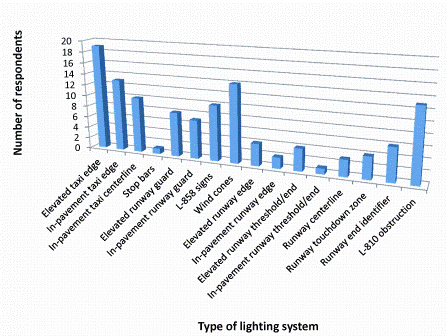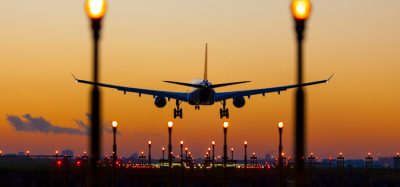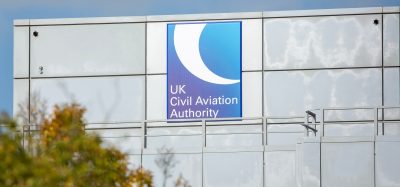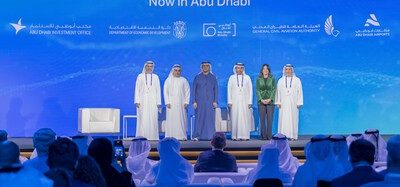Light-Emitting Diode airfield lighting systems
Posted: 2 October 2012 | John D. Bullough, Senior Scientist, Lighting Research Center, Rensselaer Polytechnic Institute | No comments yet
Light-Emitting Diode (LED) airfield lighting is increasingly used at airports in the United States and abroad, largely because of the potential for this technology to produce substantial savings in terms of maintenance and energy costs1. Information about LED lighting systems in terms of performance, cost, and other operations issues is not readily found in a single location. In an effort to gather information about airport experiences and feedback with LED airfield lighting, the Transportation Research Board (TRB) of the National Academies, through its Airport Cooperative Research Program (ACRP), appointed a panel of experts from airports, industry, government and academia to oversee a synthesis study, which has been recently published as ACRP Synthesis 35: Issues With Use of LED Airfield Light Fixtures. The objective of this synthesis study is to provide documentation about the performance of LED airfield lighting systems, and it is primarily intended for airfield operations managers and airport electrical maintenance staff.
The detective work: The primary source of information for the synthesis was a survey of 22 airports and aviation agencies throughout the U.S. – including commercial, general aviation and military airports – conducted during the summer and fall of 2011. Airport managers and other individuals were asked about their experience with LED airfield lighting, and specific issues about installation, operation, maintenance, economics and their future outlook on this new technology.
Light-Emitting Diode (LED) airfield lighting is increasingly used at airports in the United States and abroad, largely because of the potential for this technology to produce substantial savings in terms of maintenance and energy costs1. Information about LED lighting systems in terms of performance, cost, and other operations issues is not readily found in a single location. In an effort to gather information about airport experiences and feedback with LED airfield lighting, the Transportation Research Board (TRB) of the National Academies, through its Airport Cooperative Research Program (ACRP), appointed a panel of experts from airports, industry, government and academia to oversee a synthesis study, which has been recently published as ACRP Synthesis 35: Issues With Use of LED Airfield Light Fixtures. The objective of this synthesis study is to provide documentation about the performance of LED airfield lighting systems, and it is primarily intended for airfield operations managers and airport electrical maintenance staff.
The detective work
The primary source of information for the synthesis was a survey of 22 airports and aviation agencies throughout the U.S. – including commercial, general aviation and military airports – conducted during the summer and fall of 2011. Airport managers and other individuals were asked about their experience with LED airfield lighting, and specific issues about installation, operation, maintenance, economics and their future outlook on this new technology. The responses to the survey were supplemented by a thorough review of technical, trade, and news literature, including International Airport Review.


Figure 1: Number of survey respondents with LED versions of different airfield lighting systems
Who has what?
Figure 1 shows the number of survey respondents reporting that they had LED products among the various types of airfield lighting systems at their airports. Among the most common LED systems in use among the surveyed airports were taxiway edge lights, illuminated wind cones and obstruction lights. LED systems along the runways were less common. Most of the airports surveyed had been using LEDs for at least a year.
Join our free webinar: Revolutionising India’s travel experience through the Digi Yatra biometric programme.
Air travel is booming, and airports worldwide need to move passengers faster and more efficiently. Join the Digi Yatra Foundation and IDEMIA to discover how this groundbreaking initiative has already enabled over 60 million seamless domestic journeys using biometric identity management.
Date: 16 Dec | Time: 09:00 GMT
rEGISTER NOW TO SECURE YOUR SPOT
Can’t attend live? No worries – register to receive the recording post-event.
Assembling the installation team
The responses to the survey and the findings from the literature review suggest that there are some important issues that might be considered when an airport is preparing to install LED airfield lighting. For airport managers wondering if specialised knowledge is required to install LED fixtures, it was reported that installation of LED lighting was no more difficult than installing conventional incandescent fixtures. At the same time, compatibility issues between LED airfield light fixtures and the existing airfield electrical infrastructure designed to operate incandescent lighting systems have arisen, resulting in problems such as minor flicker until adjustments were made with regulators. These problems appear to be less frequent as the technology matures, assisted by guidance from the Federal Aviation Administration (FAA) to help ensure compatibility.
Checking with the manufacturer of the LED systems before installing to ensure compatibility with existing regulator and control equipment is important. To this end, it is essential for airports to develop strong working relationships with the vendors and manufacturers of LED lighting fixtures to assist with troubleshooting and potential unforeseen issues during the installation process. As reported in a previous issue of International Airport Review2, Steve Pittman reports that at Raleigh-Durham International Airport, the manufacturer of the LED airfield light fixtures was a key member of the LED installation team and was frequently consulted throughout the process.
Keeping the lights on
LED airfield lighting systems have largely met the widespread expectations of using substantially less energy and having lower maintenance requirements than incandescent lighting systems. The observed failure rates for LED airfield lighting fixtures are low. As a result, maintenance intervals with LEDs are substantially longer than with incandescent lighting systems. Although LED airfield lighting systems have been in use for a number of years, long-term performance data for these systems are scarce because such data has not been systematically collected and reported.
A few airports reported some maintenance issues with LED airfield lighting fixtures, including mechanical damage from snow plowing and sweeping equipment, and water ingress. As pointed out by many of these same airports, however, these issues are similar to those for incandescent lighting systems. Operations such as plowing and sweeping must be performed carefully in all cases. Related to snow plowing, LED airfield lighting systems appear to experience few issues related to snow and ice buildup on fixtures, but widespread systematic data are few and far between. Although many airports in cold climates reported success with winter use of LED fixtures without heating units installed, most airports have not performed analyses to determine if, or when, heaters might actually be needed in their climates.
Finally, a few instances of incomplete compatibility with legacy systems and infra – structures have been found, and some airports replaced regulators in their lighting systems to address or avoid such problems with LEDs. Newer generations of LED airfield lighting fixtures have been redesigned to avoid issues occurring with earlier products, and as stated above, FAA guidance has been updated to address and prevent incompatibility issues. In addition, through its Electrical Infrastructure Research Team (EIRT), the FAA is investigating the design of potential new electrical infrastructures for airfields that can increase compatibility with LED systems, resulting in more efficient and reliable performance.
It’s payback time
In the survey, airport organisations were asked to describe their funding sources and the economic cost factors associated with their LED airfield lighting systems. Taken together, the results from the survey and the findings from the literature review confirmed that funding for LED airfield lighting projects at commercial airports has come from several sources, often in combination, including Airport Improvement Program funds, Passenger Facility Charges, federal stimulus funds such as the recent American Reinvestment and Recovery Act, state or municipal aviation funds, or other sources such as capital improve ment funds, land rental fees, fuel fees, or excise taxes.
The lower expected operating costs of LED airfield lighting have been confirmed through reduced maintenance costs and reductions in energy use of LED fixtures. Examples from the published literature include:
- Vero Beach Municipal Airport expects to have saved $7,700 per year in reduced operating costs following installation of LED lights along one taxiway.
- Prescott Municipal Airport expects to have saved $9,800 per year in reduced energy and maintenance costs after installing LED taxiway lights along one taxiway.
- Tulsa International Airport expects its LED taxiway edge lights to have saved $25,000 per year in reduced energy cost
- Will Rogers World Airport expects its more than 800 LED airfield lights to have saved $60,000 per year in reduced energy and maintenance costs.
- Raleigh-Durham International Airport reported that LED airfield lights resulted in energy and maintenance savings of $400,000 per year.
Although it is relatively more straightforward to estimate economic savings from reduced energy use, it is likely that the majority of economic savings come from reduced maintenance costs. The precise economic value of impacts on maintenance costs is not well understood and needs to be more systematically documented, especially with an eye to confirming whether expectations about savings have actually been realised after installation.
Putting it all together
The findings from ACRP Synthesis 35 suggest that LED airfield lighting is indeed ready for prime time and that LED technology has already saved airports time and money. Guidance from the FAA about LED lighting systems is helping ensure that LED airfield lighting systems continue to improve in efficiency and reliability. Certainly, more longterm performance data are needed and additional documentation of the actual savings in energy and maintenance that have been achieved and not just expected, will be valuable. Similarly, there is little long-term data about the performance of LED airfield lighting systems over the long-term.
The synthesis report from ACRP is designed to be a compendium of useful information, best practices, and helpful advice to airport managers as they consider if, or when, to install LED airfield lighting systems along their airport’s taxiways and runways. To this end, the report also includes information about current FAA guidance on LED airfield lighting systems, detailed responses to the survey used to develop the report, a list of airports with LED airfield lighting systems, pointers to organisations with additional technical information about LED lighting, and a list of economic cost analysis tools available online.
ACRP Synthesis 35: Issues With Use of LED Airfield Light Fixtures, can be downloaded from the TRB website at: http://onlinepubs.trb.org/onlinepubs/acrp/ acrp_syn_035.pdf.
References
1. ‘Transforming Airfield Lighting: The research into LED Technology’, International Airport Review, Issue 6, 2011
2. ‘Is LED lighting right for your airport?’, International Airport Review, Issue 3 2010
About the author
John D. Bullough, Ph.D., author of ACRP Synthesis 35, is a senior research scientist and adjunct faculty member at the Lighting Research Center (www.lrc.rpi.edu), part of Rensselaer Polytechnic Institute. He manages the center’s transportation lighting and safety research program and teaches in Rensselaer’s graduate programs in lighting and architectural sciences. He has written or co-written more than 250 articles and technical publications on visual performance, human factors, and LED lighting systems.
Join our free webinar: Revolutionising India’s travel experience through the Digi Yatra biometric programme.
Air travel is booming, and airports worldwide need to move passengers faster and more efficiently. Join the Digi Yatra Foundation and IDEMIA to discover how this groundbreaking initiative has already enabled over 60 million seamless domestic journeys using biometric identity management.
Date: 16 Dec | Time: 09:00 GMT
rEGISTER NOW TO SECURE YOUR SPOT
Can’t attend live? No worries – register to receive the recording post-event.

















